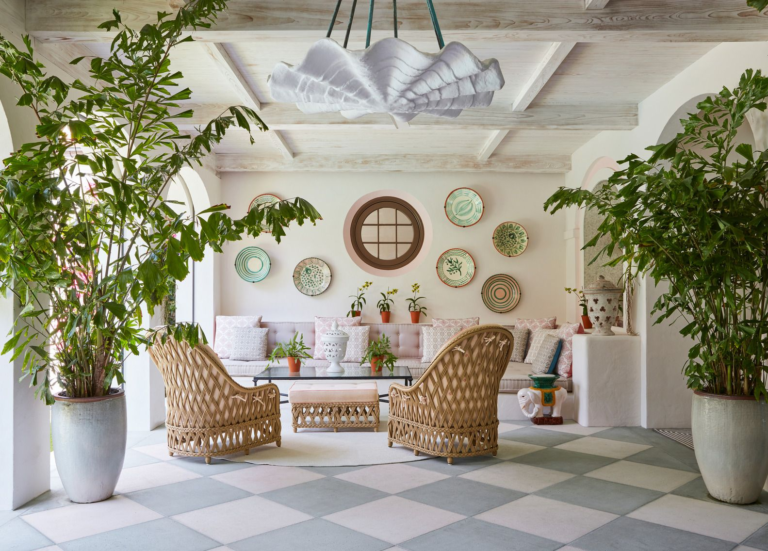Art plays an essential role in transforming the look and feel of any home. Beyond just being a decorative element, artwork can bring personality, history, and a sense of sophistication to your living space. The key to choosing the right pieces lies in finding the perfect match between your home’s colour schemes, moods, and overall theme.
Whether you’re into minimalistic designs or enjoy more elaborate and bold spaces, selecting art from different artistic movements, such as Impressionism or Surrealism, can completely redefine your home’s atmosphere. Here’s a guide to choosing the perfect artist for your home decor.
1. Understanding Your Color Palette
The foundation of any successful home decor project is the colour palette. Before diving into selecting an artist, consider the dominant and accent colours in the room. Are they warm, cool, or neutral? The tones in your walls, furniture, and fabrics should work harmoniously with the art you display.
For rooms with warm tones, like earthy browns, oranges, and yellows, consider artists who use vibrant, expressive colours. Vincent van Gogh, with his striking brushstrokes and rich yellows, blues, and greens, is an excellent choice for adding warmth and energy to a space. His post-Impressionist work, particularly pieces like Starry Night or Sunflowers, can bring vibrancy and life to a room with warm hues.
If your space has cooler tones, such as blues, greys, and greens, look to artists like Claude Monet. His Impressionist works, filled with soft, calming blues and greens, evoke serenity and complement cool-toned rooms, making them ideal for spaces like bedrooms or living areas where relaxation is key.
For neutral-toned rooms, where beige, white, or gray dominates, you can get more creative with art from diverse movements. Consider incorporating modernist works by artists like Piet Mondrian or Kazimir Malevich, whose use of geometric shapes and bold primary colors can contrast beautifully with neutral surroundings.
2. Matching Art with the Mood of the Room
Each room in your home serves a specific purpose, and the mood of that space can guide your art selection. The dining room might require art that sparks conversation, while the bedroom may benefit from soothing, tranquil pieces. Selecting art that enhances the mood is key to creating a balanced environment.
In a calm and peaceful space, like a bedroom or meditation room, Impressionist works by artists such as Mary Cassatt or Berthe Morisot provide soft, dreamy visuals. Their delicate use of light and subtle color palettes can promote relaxation, perfect for a personal sanctuary.
For a lively, energetic room, such as a kitchen or playroom, more vibrant and abstract artists can bring in that spark. Jackson Pollock and his action painting style is ideal for creating a sense of energy and movement. Pollock’s wild splashes of color will bring excitement into a room without overpowering the space.
In spaces designed for entertaining, such as the living room or dining room, choose artists who encourage conversation and intrigue. Salvador Dalí, the master of Surrealism, is perfect for creating a surreal, thought-provoking ambiance. His dreamlike and bizarre imagery can stir curiosity and become a focal point in any social space.
3. Aligning with Themes and Styles
The overall theme of your home decor plays a huge role in selecting the right art. Some homes may lean towards minimalist designs, while others celebrate maximalism. Each style has its perfect artistic counterpart.
For a minimalist home, less is more. Opt for Abstract Expressionist works by artists like Mark Rothko. His large color-field paintings use simple yet powerful blocks of color that don’t overwhelm a room but instead create a strong visual impact. Pairing Rothko’s art with modern furniture and sleek lines can make for an elegant, understated design.
If your decor is more maximalist, filled with bold patterns and rich textures, look for art that complements the exuberance of the room. Gustav Klimt’s Art Nouveau style, characterized by intricate details and golden hues, can add a sense of luxury and extravagance. Klimt’s The Kiss or Portrait of Adele Bloch-Bauer I would thrive in a space filled with ornate furnishings and dramatic design elements.
For homes with a vintage or classical theme, the works of Renaissance or Baroque artists, such as Caravaggio or Rembrandt, can enhance the historical feel of the room. Their use of chiaroscuro (light and shadow contrast) and dramatic compositions can add depth and gravitas to more traditionally styled spaces.
4. Experimenting with Different Art Movements
Art doesn’t have to stick to one style or movement throughout your home. You can mix and match various movements based on the unique character of each room.
For example, in a living room, a combination of Impressionist landscapes by Monet alongside Cubist works by Pablo Picasso can create a dynamic, visually stimulating environment. The soft, fluid brushstrokes of Impressionism paired with the angular, abstract shapes of Cubism provide a balance between serenity and intellectual engagement.
A hallway or stairwell can become a gallery of its own, showcasing pieces from Fauvism, Pop Art, or Expressionism. Bright, bold colors from Henri Matisse or Andy Warhol can make transitional spaces more exciting and attention-grabbing.
5. Choosing the Right Format
Lastly, consider the format of the artwork. Whether it’s a framed canvas, a wall mural, or a sculpture, the format should fit the scale and purpose of your room. You can find art from the most celebrated artists in history in virtually any format, ensuring that your chosen piece complements the space both visually and physically.
Conclusion
Selecting the perfect artist for your home decor isn’t just about choosing a name or a painting; it’s about aligning the essence of that artwork with your home’s design, mood, and theme. By considering color schemes, moods, themes, and art movements, you can transform your home into a curated gallery that reflects both your personal taste and the spirit of the great masters of art history.

